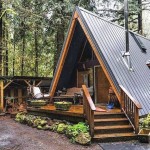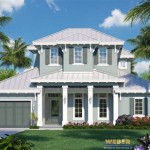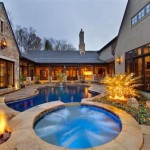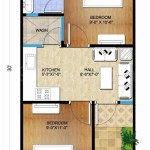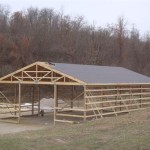House Plans Built Into Hillside: Integrating Architecture with Terrain
Houses built into hillsides represent a unique architectural approach that seamlessly blends the built environment with the natural landscape. This construction method, often referred to as earth-sheltered or earth-integrated design, offers a myriad of benefits ranging from enhanced energy efficiency to increased privacy and aesthetic appeal. Hillside house plans require careful consideration of the site’s topography, soil composition, and local climate to ensure structural integrity, minimize environmental impact, and maximize the advantages of the surrounding environment.
The appeal of hillside homes extends beyond their visual charm. These residences often provide a sense of seclusion and tranquility, while also offering panoramic views. The inherent thermal mass of the earth surrounding the structure contributes to a more stable interior temperature, reducing the need for excessive heating and cooling. Furthermore, hillside construction can minimize site disturbance, preserving the natural contours and vegetation of the landscape. Careful planning and execution are essential to overcome the challenges associated with hillside builds, such as managing water runoff and ensuring adequate structural support.
Advantages of Hillside Construction
One of the primary advantages of building a house into a hillside is the enhanced energy efficiency it provides. The earth acts as a natural insulator, moderating temperature fluctuations inside the home. In the winter, the surrounding earth helps to retain heat, reducing heating costs. Conversely, in the summer, the earth keeps the interior cooler, minimizing the need for air conditioning. This natural temperature regulation results in significant energy savings throughout the year, contributing to a more sustainable lifestyle.
Beyond energy efficiency, hillside homes often offer increased privacy and sound insulation. The earth surrounding the structure acts as a buffer, reducing noise pollution from external sources. This creates a more peaceful and secluded living environment, particularly beneficial in densely populated areas or near busy roads. The integration with the natural landscape also provides a natural screen, enhancing privacy from neighboring properties.
Aesthetically, hillside homes offer a distinctive and visually appealing design. The integration with the surrounding landscape creates a harmonious blend of nature and architecture. The natural contours of the hillside can be incorporated into the design, creating unique and organic forms. Furthermore, rooftop gardens and green roofs are often incorporated into hillside homes, further blurring the lines between the built environment and the natural world. This results in a visually stunning and environmentally conscious design.
Key Considerations for Hillside House Plans
Developing house plans for a hillside requires careful consideration of several key factors. The geological stability of the site is paramount. A thorough geotechnical investigation should be conducted to assess the soil composition, slope stability, and potential for landslides or erosion. This investigation will inform the design of the foundation and retaining walls, ensuring the structural integrity of the home.
Water management is another critical aspect of hillside construction. Proper drainage systems must be implemented to prevent water from accumulating around the foundation, which can lead to structural damage and moisture problems. This includes designing effective surface water runoff systems, as well as subsurface drainage to manage groundwater. The design should also consider the impact of rainfall and snowmelt on the surrounding landscape, minimizing erosion and protecting water quality.
Accessibility is also an important consideration. Hillside properties can present challenges for access, particularly for individuals with mobility issues. The design should incorporate appropriate access routes, such as ramps, stairs, or elevators, to ensure that the home is accessible to all residents and visitors. The placement of parking areas and walkways should also be carefully considered to minimize the impact on the natural landscape and provide safe and convenient access to the home.
Types of Hillside House Designs
There are various types of hillside house designs, each with its own unique characteristics and advantages. One common type is the "walk-out basement" design, where the house is partially embedded into the hillside, with the lower level having direct access to the outdoor space. This design maximizes natural light and ventilation on the lower level, creating a comfortable and functional living space.
Another type of hillside design is the "earth-bermed" house, where the majority of the walls are covered with earth. This design provides excellent insulation and soundproofing, creating a very energy-efficient and private living environment. Earth-bermed houses often feature a flat or gently sloping roof that can be used as a garden or outdoor living space.
A more contemporary approach involves cantilevered structures that extend outwards from the hillside. These designs often feature large windows and balconies, offering panoramic views of the surrounding landscape. Cantilevered structures require careful engineering to ensure structural stability, but they can create striking and visually dynamic homes that appear to float above the ground.
Construction Techniques for Hillside Homes
Constructing a house into a hillside requires specialized construction techniques to ensure structural integrity and prevent water damage. Retaining walls are often necessary to stabilize the hillside and prevent soil erosion. These walls can be constructed from a variety of materials, including concrete, stone, or timber. The design of the retaining walls should consider the soil pressure, drainage requirements, and aesthetic integration with the surrounding landscape.
Foundation design is also crucial for hillside construction. The foundation must be able to withstand the lateral pressure of the soil and the weight of the structure. Deep foundations, such as piles or caissons, may be necessary in areas with unstable soil. The foundation should also be designed to prevent water from seeping into the basement or crawl space. This may involve the use of waterproofing membranes, drainage systems, and sump pumps.
Excavation is another important consideration. The excavation process should be carefully planned to minimize disturbance to the surrounding landscape and prevent soil erosion. Temporary retaining walls or shoring may be necessary to support the excavation site. The excavated soil should be properly managed and disposed of, or reused on the property if possible. The goal is to minimize the environmental impact of the excavation process and preserve the natural contours of the hillside.
Materials for Hillside Construction
The selection of materials for hillside construction is critical for ensuring durability, energy efficiency, and aesthetic appeal. Concrete is a common material for retaining walls and foundations, due to its strength and durability. Reinforced concrete is often used to provide additional structural support. The concrete should be properly cured and sealed to prevent water damage and ensure long-term performance.
Natural stone is another popular material for hillside construction. Stone can be used for retaining walls, cladding, and landscaping. It provides a natural and aesthetically pleasing look that blends well with the surrounding environment. Stone is also a durable and low-maintenance material that can withstand harsh weather conditions.
Timber is a versatile material that can be used for framing, decking, and cladding. Timber frame construction is a popular choice for hillside homes, as it allows for large open spaces and flexible design options. Wood is a renewable resource that can be sustainably sourced. However, it is important to protect timber from moisture damage and insect infestation. Proper treatment and maintenance are essential for ensuring the longevity of timber structures.
Sustainability and Environmental Considerations
Hillside construction offers numerous opportunities for incorporating sustainable design principles. The natural insulation provided by the earth can significantly reduce energy consumption. Using recycled or reclaimed materials can minimize the environmental impact of the construction process. Incorporating passive solar design principles can maximize natural light and ventilation, further reducing energy costs.
Protecting the surrounding environment is also a crucial consideration. Minimizing site disturbance, preserving existing vegetation, and implementing erosion control measures can help to protect the natural ecosystem. Using native plants for landscaping can provide habitat for local wildlife and reduce the need for irrigation. Designing rainwater harvesting systems can collect rainwater for irrigation and other non-potable uses, conserving water resources.
Careful consideration should be given to the impact of the construction on water quality. Implementing sediment control measures can prevent soil erosion from polluting nearby streams and rivers. Designing stormwater management systems can reduce the volume and velocity of stormwater runoff, minimizing the risk of flooding and erosion. Using permeable paving materials can allow rainwater to infiltrate into the ground, replenishing groundwater supplies.
Cost Factors Associated with Hillside Homes
The cost of building a house into a hillside can vary significantly depending on several factors, including the complexity of the design, the site conditions, and the materials used. Generally, hillside construction is more expensive than building on a flat lot due to the additional engineering, excavation, and retaining wall costs. However, the long-term energy savings and increased property value can offset the initial investment.
The cost of excavation and retaining walls can be a significant expense. The amount of excavation required will depend on the slope of the hillside and the size of the house. Retaining walls can be costly to construct, particularly if they are tall or complex. Obtaining multiple quotes from experienced contractors is recommended to ensure competitive pricing.
Engineering costs are also typically higher for hillside homes. A structural engineer is needed to design the foundation and retaining walls, ensuring the structural integrity of the home. A geotechnical engineer may also be required to assess the soil conditions and recommend appropriate foundation solutions. These engineering costs can add to the overall cost of the project, but they are essential for ensuring safety and durability.

The Architect Split Level House Built On Steep Slope Description From Kathabuzz Co Into Hillside Architecture Unique Plans

Dailyhomedesigns Com Architecture House Hillside Facade

How To Artfully Build A House On Hillside

Hillside House Plans With Garages Underneath Houseplans Blog Com

Hillside House Slope Design

Plan 51697 Traditional Hillside Home With 1736 Sq Ft 3 Be

Plan 012h 0012 The House

Plan 52164 Hillside House With 1770 Sq Ft 4 Bedrooms 3 F

House Built Into A Hill

Hillside House Plan Modern Daylight Home Design With Basement

